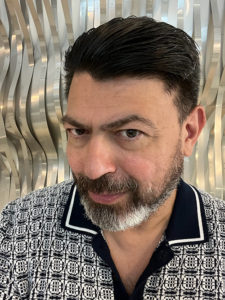Letter from the Chair
Dear students:
In his Metaphysics, the Greek philosopher Aristotle (384–322 BC) remarked: “It is through wonder that men [and women] now begin and originally began to philosophize; wondering in the first place at obvious perplexities, and then by gradual progression raising questions about the greater matters.”
For Aristotle, the wonder that leads to philosophy, and more generally, to knowledge, was evidence that we ask questions––we wonder––in order to satisfy not our bodily needs and instincts, but a spiritual (or intellectual) urge within us. This wonder we commonly define as curiosity, and it is the drive that pushes us not only to find reasons for the unknown, but also to challenge ourselves: our fear to think critically and to lose our certainties. If you are in our department, we expect you to be animated by insatiable curiosity. We want you to push us all, the faculty, not only to provide you with the tools for answering your questions, but also to fill you with renewed curiosity. Without your thirst for knowledge, our teaching would be of little value.
This year, we have introduced a new format for our two surveys. Through the theme of “encounters” in art history, from prehistory to the contemporary world, we aim to arouse your curiosity, and to make you wonder at the endless ways in which works of art and artifacts convey historical meaning, synthesize differing and sometimes antagonistic cultures, and propose change.
We are also introducing changes in our graduate program this year. For the first time in many years, we are again offering our MA students in art history the possibility of compiling a thesis as a capstone project. In this way, we now allow students curious about the feats and challenges of research to explore this possible pathway to their future.
This year, two new faculty members have joined our ranks: Dr. Mora Beauchamp-Byrd and Dr. Brendan Weaver. Having straddled a career between museums and universities, Dr. Beauchamp-Byrd, an expert in the history of the arts of the African diaspora in North America and England, will be directing our prestigious Museum and Cultural Heritage Studies program. An anthropologist and an archaeologist, Dr. Weaver has a unique knowledge of the visual culture and everyday life of the numerous enslaved Africans working in Jesuit haciendas in Peru. Thanks to these two new colleagues, we will be able to expand our Museum and Cultural Heritage Studies program.
Stay tuned, share your curiosity with us, and we will make sure that “by gradual progression” you will be able in a near future to fuel your own wonder through an independent and critically-grounded wondering.
Sincerely yours,
Lorenzo Pericolo
August 2023
